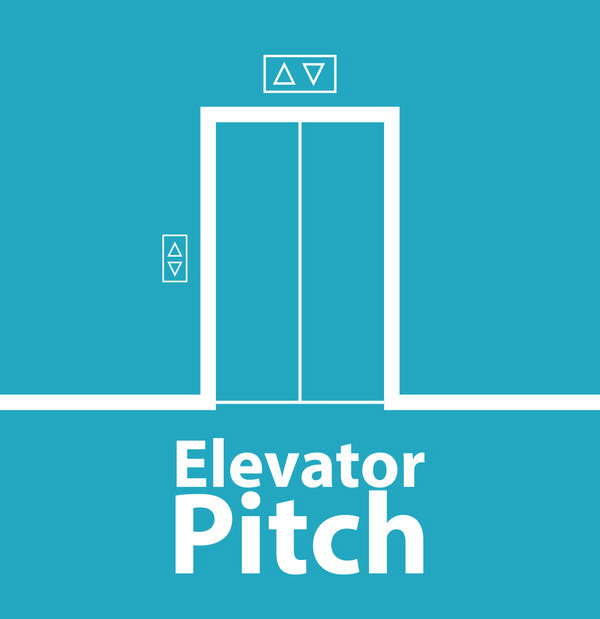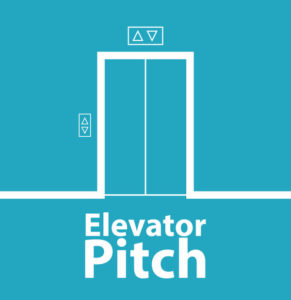
I’ve been coaching nonprofits and entrepreneurs on how to develop a good elevator pitch for years. In fact, just last month I worked with six different French biotech startups, critiquing and helping them refine theirs.
The term describes a hypothetical scenario in which you step into an elevator and find yourself face to face with an “important” person: a venture capitalist you’ve been trying to meet, a potential partner, an important supplier, etc.
It’s a short ride and you’ve only got a minute or two to make a positive impression and pique their interest.
The idea (whether you are in an actual elevator or not) is to condense the essential elements of your work into a short, pithy explanation — an explanation that you have at the ready should the opportunity arise without warning.
Do it well and your pitch can open the door to a wide range of opportunities, both short and long term. Do it poorly and you may find yourself standing alone in an empty elevator.
Three Characteristics of a Strong Elevator Pitch
1. It is concise.
Whatever the circumstances, if it takes a long time (or, God forbid, requires the use of PowerPoint) to explain what you do and why it’s important, you’ve probably lost your listener. It also likely means that your work is not yet focused.
For example, one of my clients determined that they needed a sharper strategy based on the fact that the only way they could explain their (11 different!) programs in one or two sentences would be, “through the use of multiple commas and semi-colons.” The activities were too numerous and not clearly connected, making everything hard to explain, let alone implement.
Your staff is also part of your audience. If they can’t explain what you do concisely, there’s a good chance they don’t understand which of your priorities are most important.
2. It is highly focused.
There is only so much you can accomplish in a minute or two, regardless of how well-crafted your elevator pitch. Telling a long story or trying to convince a person in a first encounter to invest in your startup are both losing approaches. Rather, the best outcome is that you pique the listener’s interest so that they want to hear more.
A tight focus is a useful perspective to carry into all types of gatherings, whether social get-togethers, networking meetings, or most any event. Especially when the meeting’s purpose is not a business one, sharing just enough to get people interested in hearing more before moving on to other topics will be appreciated.
3. It has a call to action.
In the investor scenario, if you’ve succeeded in piquing their interest, the natural “call to action” is to request a business card (remember those?) or schedule a meeting. For a nonprofit, it may be to get someone interested enough in the cause or issue to be open to volunteering — or perhaps to schedule a meeting for follow-up discussion.
Just remember that the primary purpose of sharing your elevator pitch is not to “sell” your idea or explain details — it’s to create the chance to have a further conversation.
A Terrific Example
I often refer people to something I heard at the Harvard Business School’s New Venture Competition in 2015. The challenge was to get the audience interested and able to understand the business concept — in only 90 seconds.
The winner was RapidSOS. You can watch their pitch here (complete with countdown clock visible in the background).
Here’s a brief breakdown of their pitch to illustrate what made it so effective:
- Strong start. They lead with a few big numbers: “60% of emergency 911 calls can’t be located; 70 calls will fail in the next 90 seconds alone.” They describe the problem and demonstrate that it is a big one.
- Personal story. The speaker shares a compelling story about his father. He explains why solving this problem matters.
- Problem pinpointed. “Today’s emergency response system is fragmented and relies on 1960s wire-line technology.”
- Solution offered. A way to universally push data from any device to any 3-digit emergency number globally. Note that they don’t discuss how it will work, only what it will do to solve the problem.
- Team credentials. “We’re from MIT, Harvard, Yale, Columbia” — all top-tier universities. Worth highlighting but brief enough so you don’t feel that the pitch is about them.
- Steps taken. “Working with over 100 emergency dispatch centers…” Provides a reason to believe that they understand what’s required to solve this problem and that key players are already taking them seriously.
- Call to action. “With your help, we will…” Limited and clear. This can lead the listener to ask, “How can I get involved?”
One interesting side note about the power of storytelling: When planning the elevator pitch program for the French entrepreneurs, the program coordinator suggested I use this pitch as an example. Though I had shared this pitch with him more than five years ago, he clearly remembered the story and the impression it made on him.
Reflections
If your work is hard to explain clearly in a short period of time — regardless of how strong and well thought out it may be — you’ll have difficulty enlisting the interest (i.e., help and money) of others. Further, it is likely that your team may not fully understand how to prioritize their day-to-day decisions.
By taking time to develop a clear, 60–90 second explanation of what you do and why it’s important, you’ll maximize your opportunities the next time you find yourself riding in an elevator!











